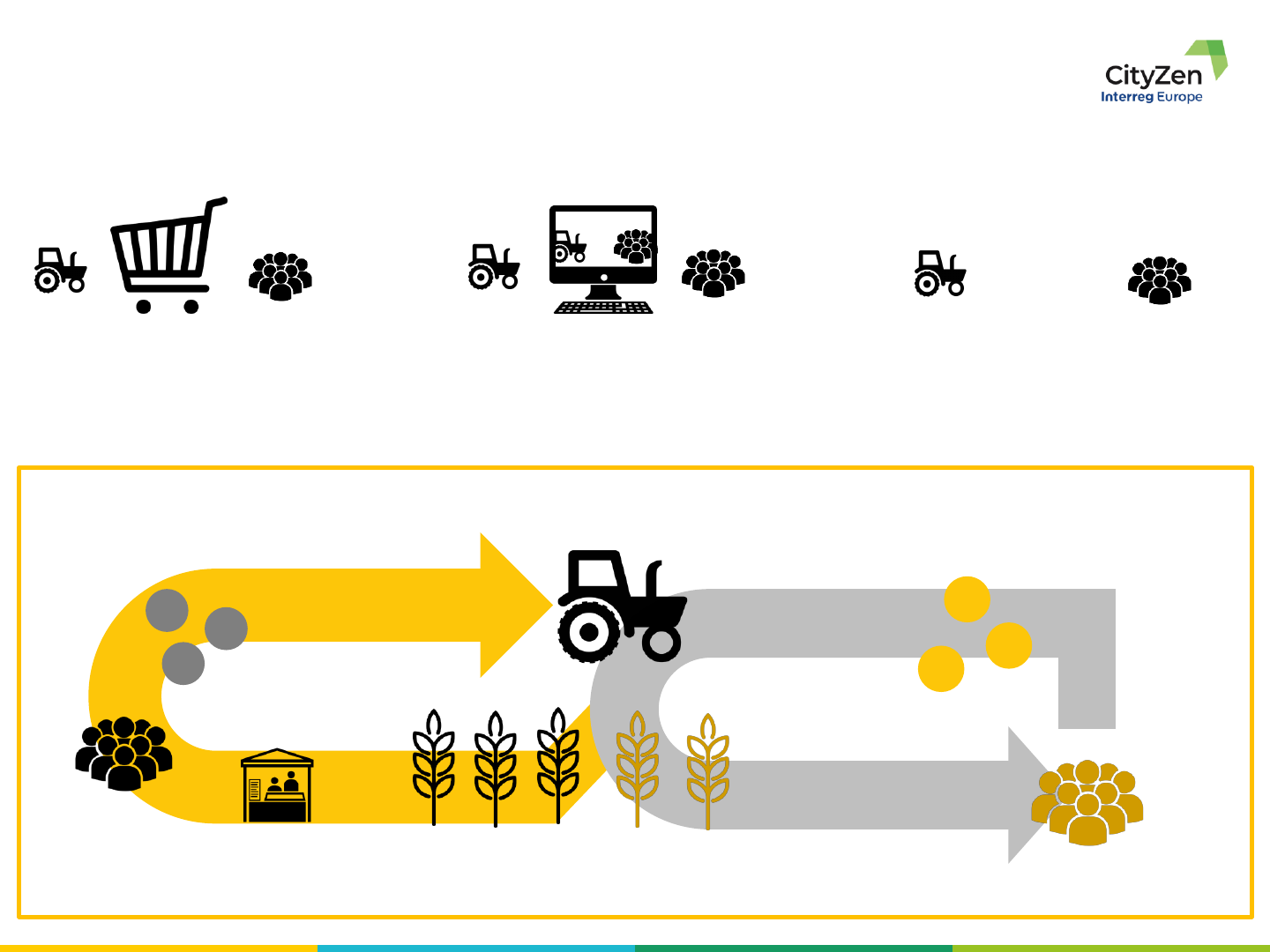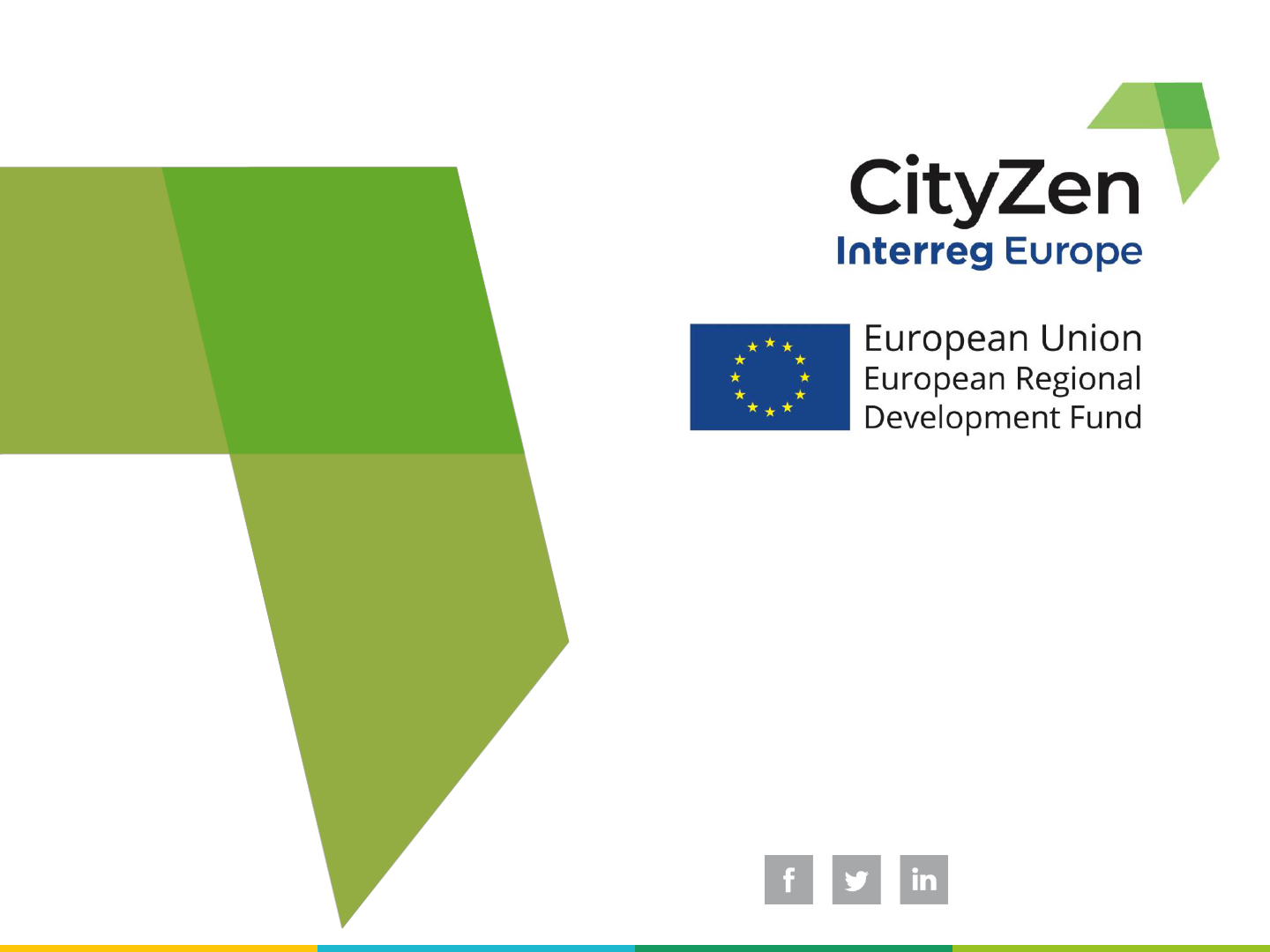
Andrea Patrucco
Independent consultant on urban policies and rural-urban
development | Milan | Italy
Urban farming business
models
21 January, 2021

2
Brief personal presentation
Direct experiences on management and funding of urban projects and
urban-rural initiatives. Some examples:
OpenAgri – New Skills for new jobs in peri-urban agriculture |
Urban Innovative Action project | Municipality of Milan
RUMORE - Rural-Urban partnerships MOtivating Regional
Economies | Interreg Europe project | Lombardy Region
Agro-Millennials – a new metropolitan agricultural generation |
Local project funded by Cariplo Foundation | Municipality of
Gorgonzola (Milan)

3
Executive summary
1. Organizational models and business models in urban farming: a
close connection.
2. What are the economic impacts that urban farming produces?
3. Municipalities as activators of new urban and peri-urban
farming processes: implications of short value chains
4. Urban farming and urban economies: agricultural projects of
circular economy and agro-ecology
5. The role of citizens: from consumers to prosumers
6. Comments on environmental, economic and social sustainability

4
Guide for the presentation
For each point indicated in the summary I underline
elements to be considerate for business modelling
in urban farming starting from concrete examples of
my experience.
Above all the experiences:
the «pioneer and flaghip project» in Italy: the CSA
(Community Supported Agriculture) Arvaia in
Bologna.
Comments and recommendations raise from these
experiences.

5
Organizational models and
business models in urban
farming: a close connection.
1

6
Territorial community model
The economic sustainability of urban farming passes through necessary points
of interests:
1. Diversification of activities: in line with
the multifunctional approach of
agriculture
2. Keep business costs low: waste re-use
and apply circular economy initiatives
3. Establish relationships with citizens
who are not farmers for training and
leisure activities
4. Regulate the use of space as a shared
space for different but compatible uses.
The reference model is:
CSA - Community Supported Agriculture
• Niche and specific agri-products;
• Different urban-rural supply
chains;
• Volunteers networks
• Training courses and workshop
• Micro-generators for energy
demand
• Raw Materials from organic waste
• Multi-function spaces (outdoor and
covered) to be shared and rented

7
Models
MASS MARKET RETAIL
SYSTEM
ONLINE PLATFORMS
DIRECT
RELATIONSHIP
CONSUMERS
FARM
CONSUMERS
FARM
CONSUMERS
FARM
CROP
FARMER MARKETS
€
€
€
€
€
CUSTOMERS
SUPPORTERS
CSA
CSA Model (Community Supported Agriculture)
€
FARM
START
HERE

8
Arvaia model
FARM
CROP
€
€
€
SUPPORTERS
/COSTUMERS /
FARMERS
CROP
Arvaia is a cooperative of citizens,
producers, farmers born in 2013 in
Bologna.
In June 2015, through a public call,
Arvaia rent from the Municipality of
Bologna 47 hectares of land farm in
the area.
Arvaia is a CSA - Supporting
Community Agriculture - which
produces and distributes organic
products to members every week.
The shareholders finance the costs for agriculture production in January, from
the budget estimation.
The shareholders assume the risks of the CSA and benefit from everything that is
produced and distributed weekly in equal parts.
The investments necessary for production are made possible from the capital lent
by the shareholders, bound for 3 years and remunerated at 2%/year. No loans from
banks.

9
Arvaia model
NUMBERS:
493Shareholders in 2020 of
which 200funding shareholders.
52 active members, 9 paid workers. The annual
contribution (fee) is defined year by year based on the
estimated costs and number of contributors. Annual
contribution last year: € 780. Weekly distribution
through 10collection points in city, x 49weeks
Average weight of the weekly: 6kilos - meeting the
needs of two people (approximately).
MANAGEMENT:
1 Board of directors
5 Working groups: Distributions – farmers –
Communication/Events – Economy
Shareholders’ meetings
8830
hours
voluntary work
8780
hours
paid work

10
What are the economic
impacts that urban farming
produces?
2

11
Economic impacts of UF
Considered as a fact the social and environmental impacts of UF, What
economic impacts derive at the territorial level?
1. Property:
2. Surroundings and
neighborhood:
3. Health care and
Employment
PUBLIC: agriculture as profitable activity in comparison to
manifacture/retail. No soil consumption. Urban plans impacted.
PRIVATE: less wastelands in urban and peri-urban area. Lower
costs for area cleaning, security and indirectly on insurances.
For both: the value of the land increases. Real Estate
changed models of development: new urban projects financed
UF areas through urban tax or tax deduction, mixing functions
and open to neighborhood.
COMMUNITY HUB: urban farming as «playground» - from private to
public. No costs for extra common infrastructures.
COMMUNITY HUB: agriculture as «outdoor gym». Less expense
on health costs.
COMPETENCES AND JOBS CENTER: starting from volunteering
but also half-time / full time workers. Job reintegration
opportunities for “new workers”.

12
Economic impacts of UF
Example: OpenAgri | Milan
After the project, land contracts of 15
years are offered to new farmers
Prototype business ideas on 30 hectares of public agricultural lands made
available by Municipality for the duration of the project as experimentation phase.
New companies (4) + New NGO (1) on:
• Bread as an agricultural product;
• Subscription of farm fresh flowers bike
delivered;
• Organic agriculture, biodiversity, agro-
ecosystem services;
• Precision farming focusing on water saving
technologies; short supply chains
Existing companies (4) testing new products,
services, or a new application of existing techs, on:
• Syntropic agriculture;
• Biomass from pruning into renewable energy;
• Superfood Spirulina seaweeed;
• Sustainability of Local Craft brewery
business model

13
Municipalities as activators of
new urban and peri-urban
farming processes: implications
of short value chains
3

14
Municipalities as innovation drivers
Example: OpenAgri | Milan
Free temporary use of 33 hectares of agricultural land
An extensive program of acceleration and pre-
incubation activities, advanced training, mentorship and
strategic networking, depending on the characteristics and
the maturation of individual projects.
PHASE 0 PHASE 1 PHASE 2 PHASE 3
WHAT
TERRITORIAL
ADAPTION
PRE
-
INCUBATION
CAMPUS
INCUBATION
AND
TRAINING
WHEN
May
– Dec 2018
Apr
– Jun 2018
Sept
– Nov 2018
Oct
– Dic 2018
WHO
Universities
+
local
NGOs
Avanzi
srl +
MakeACube
Chamber
of Commerce of Milan
Formaper
(inhouse of
Chamber
of
Commerce
)
WHAT
(2)
Territorial
context
workshop
Co
-designed
Masterplan
Workshops
for:
targeting
, value
proposition
,
idea
validation.
Interlocution with possible supply
chain partners
interested in
open innovation.
Match-making
actions between supply and
demand.
Building the
business model
,
product and service
testing, operational
strategy and market
access.

15
Urban farming and urban
economies: agricultural
projects of circular economy
and agro-ecology
4

16
Agro-ecology and circular economy
Example: from RUMORE Interreg Europe project
Circular Amsterdam: Tuinen Van West – circular lab
Tuinen Van West are
4 agri-food polders
focusing on:
1. Energy-neutral
2. Self-maintenance
of public space
3. Green ‘waste’
re-used in the
area
4. Valuable water
and algae
/waterplants
5. Local food
systems
Mushrooms
producted in
cointaners
Wood waste
from Food
Forest
Worm
composting
Vegetable
garden
«butler»

17
Agro-ecology and circular economy
Example: from OpenAgri - Milan
CasciNet: Milan Porta Verde (Green Door) project
‘Milano Porta Verde’ aims to transform an abandoned agricultural
area in the “fringe” areas of South-East of Milan into a
demonstrative, productive and recreational Agroforestry Park
linked to a Community Supported Agriculture (CSA) scheme.
10.000 plants per hectare, transforming an agricultural area into an agro-
ecosystem capable of offering essential ecosystem services for all Milan
citizens.

18
The role of citizens: from
consumers to prosumers
5

19
Producers and Consumers
Agro-Millennials is a project of Nazca Mondo Alegre
Cooperative with Municipality of Gorgonzola and
other local institutions as technical schools.
The cooperative works in the fair trade market by
importing products from the world.
In 2017 decided to invest locally on urban farming
for the citizens of Gorgonzola (20,000 inhabitants).
The cooperative invests on social agriculture
activating citizens with work problems and young
graduated would-be farmers.
The cooperative uses fair trade shops to sell
agricultural products, as well as a new farmer's
market.
Example: from Agro-Millennials – Gorgonzola
Municipality (Milan area) co-financed by

20
Example: from Agro-Millennials – Gorgonzola
Municipality (Milan area) co-financed by
Producers and Consumers
The production area is just on 2 hectares in the north
part of the City, in the sorroundings of a residential
farmstead and in «fringe» plots between the new East
Milan ring road.
20 vegetables of different varieties guarantee the
supply for the hyper local demand. Revenues were €
20,000 for the first year.
The investments in machinery were financed by the
Banking Foundation as philanthropic body.

21
Comments on environmental,
economic and social
sustainability
6

22
Sustainability - comments
Urban
authorities
Urban farmers
/ pratictioners
CSA MODEL
ECONOMIC
IMPACTS OF UF
SHORT VALUE
CHAINS
(PROMOTED BY
MUNICIPALITIES)
AGRO-ECOLOGY
AND CIRCULAR
ECONOMY
PROSUMERS
Topic
New community hubs
Incremental growth
Smart use of wastelands
Land value increased (public)
Land value increased (private)
More sustainable real
estate project
Less costs in health and
employment
Territorial and neighbourhood
development
Effects on local and social innovation
New urban-rural economies
Niche products and
specific demand
Better soils in peri-urban lands
Less waste to be disposed
Mix of employment
and volunteering
Less costs on materials
Community network (citizens,
ngos, startups)
Networking with schools and
employment offices
Community Hubs
New Private and Public
partnerships
New jobs and competences
SOCIAL ECONOMIC
ENVINROMENTAL
Color legend

23
Questions for open discussion
1. Starting from the Arvaia model and more generally from CSA model, do you
think this model could be implemented in your local territory? Do you believe
that the answer to the economic sustainability of urban farming is in the
community?
If yes, what are the elements to start from? If not, what are the constraints?
2. Urban farming and peri-urban farming are not the same things, they are
differentiated by the "amount" of space available to work and set up the related
business plan. However, they share their proximity to the city and their relations
with the "urban economies".
In your opinion, what are the assets on which an urban farmer should focus, in
addition to agricultural production? (what services for citizens?)
3. Finally, which service do you think most important should be provided by the
local public body?
Give outdoor spaces, provide business creation support, promote events,…?

Project smedia
Thank you!
Questions welcome
